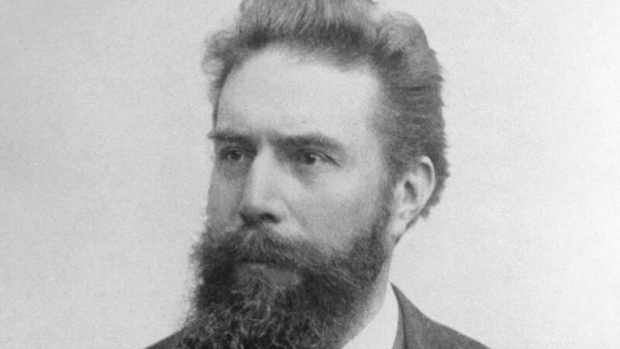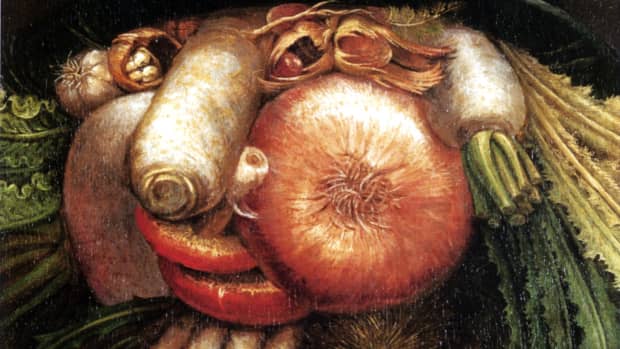Giovanni Verga & Verismo: The Birth of Italian Literary Realism
Verismo: Realism in Italian Literature
Verismo is not only a popular Starbucks brewing system but also one of Italy's most significant literary movements of the late nineteenth century. The Italian word vero means "true," and, in fact, Verismo was the literary evolution of Realism. This more general cultural movement also embraced art, of which Gustave Courbet was one of the best-known exponents.
Verismo has the following aspects in common with Realism:
- The interest in an objective narrative that merely describes facts without expressing opinions.
- Features the less well-off social classes as the protagonists of literary works (Giovanni Verga, for example, often tells about the peasants' lives).
- Uses a third-person narrative to emphasize the narrator's detachment, who must not comment in any way on the facts told.
- Offers a pessimistic vision of reality, which sees the humble social classes as unable to redeem themselves (that is, those born poor are destined to remain poor for life).
This article will introduce Giovanni Verga, the most famous Italian realist writer, and some of his most important literary productions.
Who Was Giovanni Verga?
Giovanni Verga was one of Italy's most important exponents of literary Realism. It was born in 1840 in Catania, Sicily, and died in 1922 in the same city. Verga came from a local noble family, not powerful and rich on a par with better-known noble houses, but still considered honorable, according to the customs of the time. The writer was named after his father, Giovanni Battista Verga Catalano, while her mother was Caterina Di Mauro, a bourgeois woman.
At 29, the writer moved to Florence, which was at the time one of the most prosperous Italian cities from a cultural point of view. At 32, he moved to Milan, where he met influential writers such as Giuseppe Giacosa and Arrigo Boito. In those years, Verga approached literary Realism, which would later lead him to be the greatest Italian exponent of Verismo.
Verga's Early Literary Works
At the beginning of his literary activity, Verga was influenced by the works of Dumas. This led him to write adventure novels like Amore e Patria (1856-1857) and I Carbonari della Montagna (1861-1862).
The first novel talks about the American War of Independence, describing the stories of several heroes, while the latter is a patriotic novel about the anti-French resistance in Calabria by the Italian Carbonari (one of the most famous Italian secret societies in the first half of the nineteenth century).
Starting from 1866, with the publication of Una Peccatrice, Verga changes his approach to literature by discussing the immorality and failure of romantic relationships in his era.
The novel is about a young man who falls in love with the wife of a count, who considers him only when he becomes famous for having composed a drama. The novel ends with the woman killing herself as soon as the young man seems tired of the relationship with her.
Nedda (1874): A Pre-Verismo Approach to Literature
In 1874 Verga began his approach to Verismo by publishing Nedda, one of his first novellas (works of narrative fiction, shorter than regular novels but still longer than short stories).
Recommended
Nedda describes the life of a humble olive harvester who lives on odd jobs at several farms, trying to assist her mother, who later dies. This novella doesn't show a complete conversion of Verga to Verismo, as the author will keep also writing novels set in the bourgeois and noble societies of his time; however, it anticipates the main characteristics of Verga's future and final approach to Verismo by offering
- a focus on the situation of Sicily in his time, with a particular interest in agricultural life, and
- a pessimistic vision of life as a constant and immutable source of suffering for all the humble social classes.
Verga's Final Approach to Verismo
The final approach of Verga to Verismo begins with the publication of Vita dei Campi (1880) and Novelle Rusticane (1883), two collections of novellas dedicated to the life of farmers, shepherds, fishermen, and artisans in the Sicily of his time.
In his novellas, faithfully adhering to the principles of Verismo, Verga limits himself to describing the social conditions of the humble classes without introducing a subjective narration. When doing this, Verga deals with various social issues, such as
- discrimination and labor exploitation, as seen in Rosso Malpelo (1880). The novella is about a red-haired youth who works in a mine with his father and faces discrimination because of his hair color.
- greed, as seen in La Roba (1880). The novella is about a poor farmhand who, thanks to his cunning, achieves to seize the lands of his master but then becomes so greedy that, in his old age, he despairs, knowing that once he is dead, he will not be able to take his lands with him.
- sexual insatiability, as seen in La Lupa (1880). The novella is about a woman with an insatiable sexual desire who tries to seduce all the men in the village.
Verga and the "Cycle of The Vanquished"
Following his adherence to Verismo, Verga did not limit himself to the publication of novellas but also created a cycle of novels known as "Ciclo dei Vinti" (the name means "Cycle of The Vanquished"). The vanquished were not necessarily people from humble social classes but could also be aristocrats and wealthy people living a life full of misfortunes.
The literary cycle was initially intended to include five novels but was never finished. Of it, we remember two of the most famous novels:
- I Malavoglia (1881): The protagonists are a family of fishermen living in a small town in Sicily, and fishing is their only means of livelihood. Despite being considered honorable in their province, the family will later find themselves amid various misfortunes, like falling into a debt trap, losing their home and their boat, and the death of one of the youths during military service. Ultimately, one of the sons pays all the debts, rebuys the house, and settles down with his new wife. This fact makes the family's patriarch happy, who dies shortly after in hospital.
- Mastro-don Gesualdo (1889): The protagonist Gesualdo is a bricklayer who becomes noble thanks to the arranged marriage with Bianca, a member of a fallen aristocratic family, which turns out to be a failure later, as she does not love him. This situation makes Gesualdo renounce the marriage with the servant Diodata, with whom he had several children. A story characterized by complex family events where convenience and interest in social status lead Gesualdo to remain alone, abandoned by everyone, and overwhelmed by his greed.
Verga and the Search for Truth
Giovanni Verga represented one of the most important cultural trends of the late nineteenth century: the search for truth, which derives from a growing interest in the scientific method and the objective analysis of human behavior. With Verga, literature places at the center of its interest the daily life, the situation of South Italy, and the facts concerning the humblest sections of the population, but also the stories of noble and wealthy people who end up living a life of misfortune due to their greed.
References
- Verga, G., & Vito, A. J. (1969). Disasters and disease in the work of Giovanni Verga. Italica, 46(3), 279.
- Verga, G., & Vito, A. J. (1941). The struggle for existence in the work of Giovanni Verga. Italica, 18(4), 179.
This content is accurate and true to the best of the author’s knowledge and is not meant to substitute for formal and individualized advice from a qualified professional.
© 2022 Alessio Ganci










